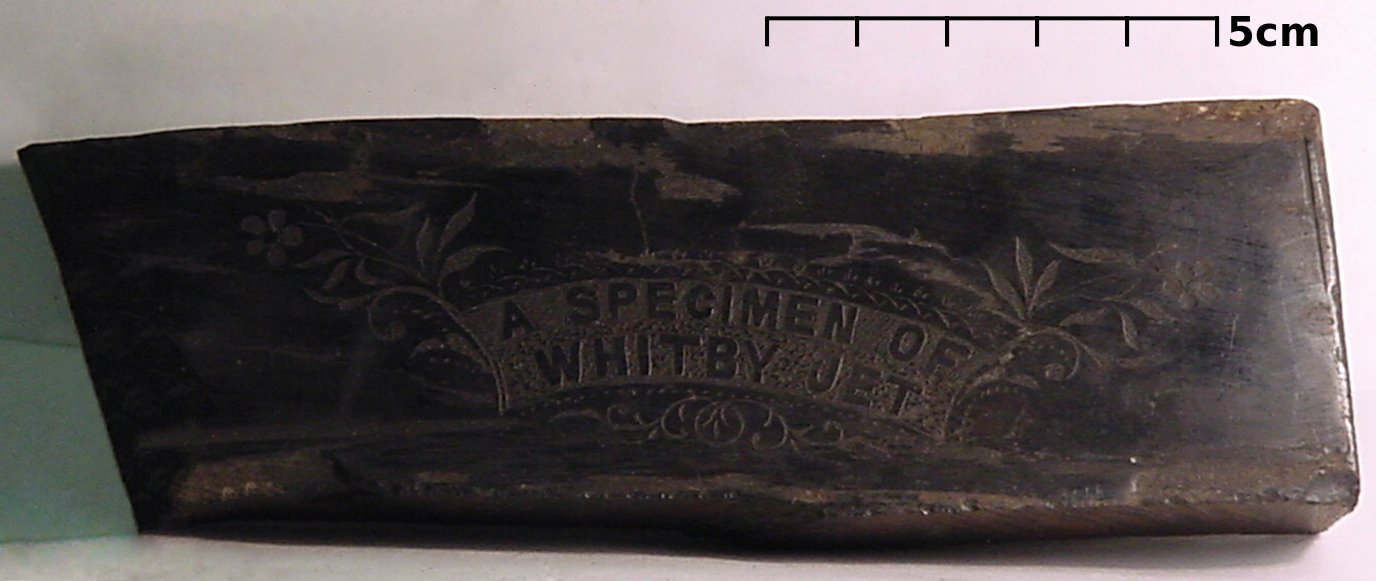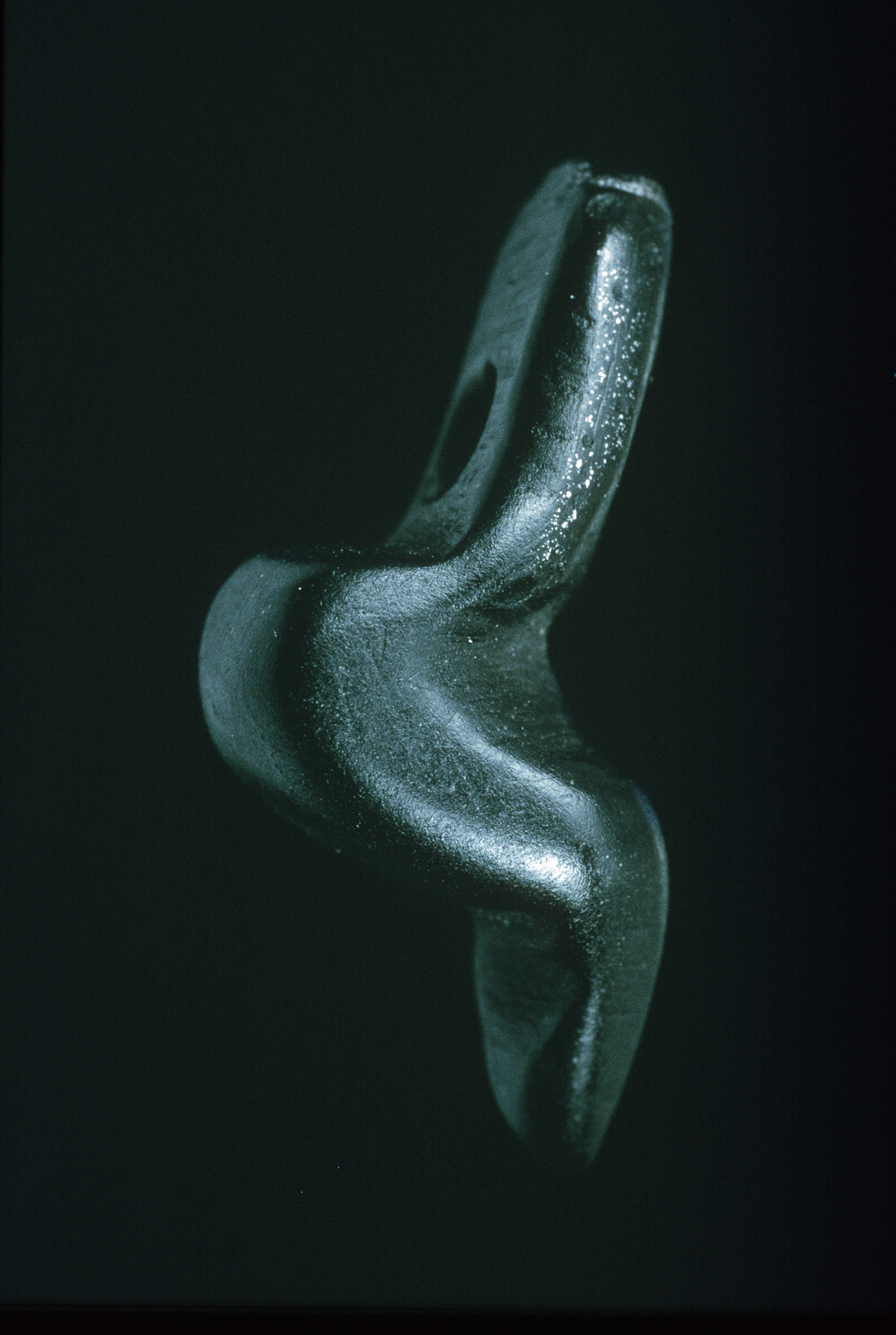|
Venuses Of Petersfels
__NOTOC__ The Venus figurines of Petersfels are several small female statuettes from the Upper Paleolithic art, Upper Paleolithic era, carved from jet (lignite), jet lignite. The tallest figurine is called the Venus of Engen. The figurines were discovered in the Petersfels caves near Engen, Germany, Engen, Baden-Württemberg, excavated in 1927–1932 by Eduard Peters und Volker Toepfer and then in 1974–1976 and 1978 by Gerd Albrecht.See Delporte (1979), S. 129; Müller-Beck & Albrecht (1987), S. 104. They stand between 1.5 and 4 cm tall and are about 15,000 to 11,500 years old, created during the Magdalenian era. They are housed in the Museums of Freiburg im Breisgau and Engen. See also * Venus figurines * Venus of Monruz * Venus of Willendorf Bibliography * Karl Dietrich Adam, Renate Kurz: ''Eiszeitkunst im süddeutschen Raum''. Konrad Theiss Verlag, Stuttgart 1980, . * Archäologisches Landesmuseum Konstanz (Hrsg.): ''Eiszeit: Kunst und Kultur''. Jan Thorbecke Verlag ... [...More Info...] [...Related Items...] OR: [Wikipedia] [Google] [Baidu] |
Upper Paleolithic Art
The art of the Upper Paleolithic represents the oldest form of prehistoric art. Figurative art is present in prehistoric Europe, Europe and Prehistoric Indonesia, Southeast Asia, beginning between about 40,000 to 35,000 years ago. Non-figurative cave paintings, consisting of hand stencils and simple geometric shapes, are somewhat older, at least 40,000 years old, and possibly as old as 64,000 years. This latter estimate is due to a controversial 2018 study based on uranium-thorium dating, which would imply Neanderthal authorship and qualify as art of the Middle Paleolithic. "we present dating results for three sites in Spain that show that cave art emerged in Iberia substantially earlier than previously thought. Uranium-thorium (U-Th) dates on carbonate crusts overlying paintings provide minimum ages for a red linear motif in La Pasiega (Cantabria), a hand stencil in Cave of Maltravieso, Maltravieso (Extremadura), and red-painted speleothems in Ardales (Andalucía). Collecti ... [...More Info...] [...Related Items...] OR: [Wikipedia] [Google] [Baidu] |
Jet (lignite)
Jet is a type of lignite, the lowest rank of coal, and is a gemstone. Unlike many gemstones, jet is not a mineral, but is rather a mineraloid. It is derived from wood that has changed under extreme pressure. The English noun ''jet'' derives from the French word for the same material, (modern French ), ultimately referring to the ancient town of Gagae. Jet is either black or dark brown, but may contain pyrite inclusions which are of brassy colour and metallic lustre. The adjective " jet-black", meaning as dark a black as possible, derives from this material. Origin Jet is a product of decomposition of wood from millions of years ago, commonly the wood of trees of the family Araucariaceae. Jet is found in two forms, hard and soft. Hard jet is the result of carbon compression and salt water; soft jet may be the result of carbon compression and fresh water. Despite the name they both occupy the same area of the Mohs scale with the difference being that soft jet is more likely to ... [...More Info...] [...Related Items...] OR: [Wikipedia] [Google] [Baidu] |
Lignite
Lignite, often referred to as brown coal, is a soft, brown, combustible, sedimentary rock formed from naturally compressed peat. It has a carbon content around 25–35%, and is considered the lowest rank of coal due to its relatively low heat content. When removed from the ground, it contains a very high amount of moisture which partially explains its low carbon content. Lignite is mined all around the world and is used almost exclusively as a fuel for steam-electric power generation. The combustion of lignite produces less heat for the amount of carbon dioxide and sulfur released than other ranks of coal. As a result, environmental advocates have characterized lignite as the most harmful coal to human health. Depending on the source, various toxic heavy metals, including naturally occurring radioactive materials may be present in lignite which are left over in the coal fly ash produced from its combustion, further increasing health risks. Characteristics Lignite is brow ... [...More Info...] [...Related Items...] OR: [Wikipedia] [Google] [Baidu] |
Engen, Germany
Engen is a town in the district of Konstanz, in Baden-Württemberg, Germany. It is situated 12 km northwest of Singen, and 15 km south of Tuttlingen. City structure History Engen has been proved by documentary evidence in the 11th century for the first time, where it belonged to the Baron of Höwen (also Hewen). In the city area of Engen, there has been a medieval castle, the Burg Neuhausen, remaining unlocated however. In the 13th century, Engen received the city charter. From 1639, the city belonged to the Count of Fürstenberg, and thus to the Principality of Fürstenberg. In 1640, the area was devastated by Swedes and French in the context of the Thirty Years' War. During the War of the Second Coalition, on May 3, 1800, a battle between the Austrians, led by Paul Kray, and the French, commanded by Jean Victor Marie Moreau, took place, resulting in a retreat of the Austrian troops. In 1806, Engen went to Grand Duchy of Baden. The city became a distr ... [...More Info...] [...Related Items...] OR: [Wikipedia] [Google] [Baidu] |
Baden-Württemberg
Baden-Württemberg (; ), commonly shortened to BW or BaWü, is a German state () in Southwest Germany, east of the Rhine, which forms the southern part of Germany's western border with France. With more than 11.07 million inhabitants across a total area of nearly , it is the third-largest German state by both area (behind Bavaria and Lower Saxony) and population (behind North Rhine-Westphalia and Bavaria). As a federated state, Baden-Württemberg is a partly-sovereign parliamentary republic. The largest city in Baden-Württemberg is the state capital of Stuttgart, followed by Mannheim and Karlsruhe. Other major cities are Freiburg im Breisgau, Heidelberg, Heilbronn, Pforzheim, Reutlingen, Tübingen, and Ulm. What is now Baden-Württemberg was formerly the historical territories of Baden, Prussian Hohenzollern, and Württemberg. Baden-Württemberg became a state of West Germany in April 1952 by the merger of Württemberg-Baden, South Baden, and Württemberg-Hohenzollern. The ... [...More Info...] [...Related Items...] OR: [Wikipedia] [Google] [Baidu] |
Magdalenian
The Magdalenian cultures (also Madelenian; French: ''Magdalénien'') are later cultures of the Upper Paleolithic and Mesolithic in western Europe. They date from around 17,000 to 12,000 years ago. It is named after the type site of La Madeleine, a rock shelter located in the Vézère valley, commune of Tursac, in France's Dordogne department. Édouard Lartet and Henry Christy originally termed the period ''L'âge du renne'' (the Age of the Reindeer). They conducted the first systematic excavations of the type site, publishing in 1875. The Magdalenian epoch is associated with reindeer hunters, although Magdalenian sites contain extensive evidence for the hunting of red deer, horses, and other large mammals present in Europe toward the end of the last glacial period. The culture was geographically widespread, and later Magdalenian sites stretched from Portugal in the west to Poland in the east, and as far north as France, the Channel Islands, England, and Wales. It is the th ... [...More Info...] [...Related Items...] OR: [Wikipedia] [Google] [Baidu] |
Venus Figurines
A Venus figurine is any Upper Palaeolithic statuette portraying a woman, usually carved in the round.Fagan, Brian M., Beck, Charlotte, "Venus Figurines", ''The Oxford Companion to Archaeology'', 1996, Oxford University Press, pp. 740–741 Most have been unearthed in Europe, but others have been found as far away as Siberia, and distributed across much of Eurasia. Most date from the Gravettian period (26,000–21,000 years ago). However, findings are not limited to this period; for example, the Venus of Hohle Fels dates back at least 35,000 years to the Aurignacian era, and the Venus of Monruz dates back about 11,000 years to the Magdalenian. Such figurines were carved from soft stone (such as steatite, calcite or limestone), bone or ivory, or formed of clay and fired. The latter are among the oldest ceramics known to historians. In total, over 200 such figurines are known; virtually all of modest size, between about in height.Fagan, 740 These figurines are recognised as so ... [...More Info...] [...Related Items...] OR: [Wikipedia] [Google] [Baidu] |
Venus Of Monruz
The Venus of Monruz (also Venus of Neuchâtel, Venus of Neuchâtel-Monruz) is a Venus figurine of the late Upper Paleolithic, or the beginning Epipaleolithic, dating to the end of the Magdalenian, some 11,000 years ago. It is a black jet pendant in the shape of a stylized human body, measuring 18 mm in height. It was discovered in 1991, at the construction of the N5 highway, at Monruz in the municipality of Neuchâtel, Switzerland. The Venus figurines of Petersfels from a site near Engen, Germany, bear remarkable resemblance to the Venus of Monruz. Especially the biggest of them, called ''Venus from Engen'' may have been done by the same artist. It is also made of jet, and also dates to the Magdalenian - to ca. 15,000 years ago. The sites of discovery of the two figurines are about 130 km apart. See also *Art of the Upper Paleolithic *List of Stone Age art This is a descriptive list of Stone Age art, the period of prehistory characterised by the widespread use ... [...More Info...] [...Related Items...] OR: [Wikipedia] [Google] [Baidu] |
Venus Of Willendorf
The Venus of Willendorf is an Venus figurine estimated to have been made around 25,000-30,000 years ago. It was found on August 7, 1908, by a workman named Johann Veran or Josef Veram during excavations conducted by archaeologists Josef Szombathy, Hugo Obermaier, and Josef Bayer at a Paleolithic site near Willendorf, a village in Lower Austria.Venus of Willendorf Christopher L. C. E. Witcombe, 2003.John J Reich; Lawrence Cunningham (2013) ''Culture and Values: A Survey of the Humanities'', 8th Ed., Andover, Belmont, CA It is carved from an that is not local to the area, and tinted with |
Henri Delporte
Henri is an Estonian, Finnish, French, German and Luxembourgish form of the masculine given name Henry. People with this given name ; French noblemen :'' See the 'List of rulers named Henry' for Kings of France named Henri.'' * Henri I de Montmorency (1534–1614), Marshal and Constable of France * Henri I, Duke of Nemours (1572–1632), the son of Jacques of Savoy and Anna d'Este * Henri II, Duke of Nemours (1625–1659), the seventh Duc de Nemours * Henri, Count of Harcourt (1601–1666), French nobleman * Henri, Dauphin of Viennois (1296–1349), bishop of Metz * Henri de Gondi (other) * Henri de La Tour d'Auvergne, Duke of Bouillon (1555–1623), member of the powerful House of La Tour d'Auvergne * Henri Emmanuel Boileau, baron de Castelnau (1857–1923), French mountain climber * Henri, Grand Duke of Luxembourg (born 1955), the head of state of Luxembourg * Henri de Massue, Earl of Galway, French Huguenot soldier and diplomat, one of the principal commanders of Bat ... [...More Info...] [...Related Items...] OR: [Wikipedia] [Google] [Baidu] |
Rudolf Drößler
Rudolf Drößler (born 18 May 1934 in Zeitz) is a German specialized book author and science-journalist. Rudolf Drößler spent his childhood in the German city Zeitz, where he made his general qualification for university entrance in 1952. He studied Germanistics as well as Astronomy in Leipzig till 1956. After that he was teacher at the "Geschwister-Scholl"-school in Zeitz for several years. Besides his job-related activities, he pursued archaeological and historical studies. During his complementary activities as memorial curator, he acquired a large amount of knowledge for his later activities and works. After his first successful books, he became known as a freelance science journalist and specialized book author for astronomy, archeology and cultural history since 1975. In doing so he dealt critically with astrology and other pseudoscience. Also he wrote some theater plays and other works of regional importance. In 1988 Rudolf Drößler published a biographical novel ab ... [...More Info...] [...Related Items...] OR: [Wikipedia] [Google] [Baidu] |
.jpg)




.jpg)

